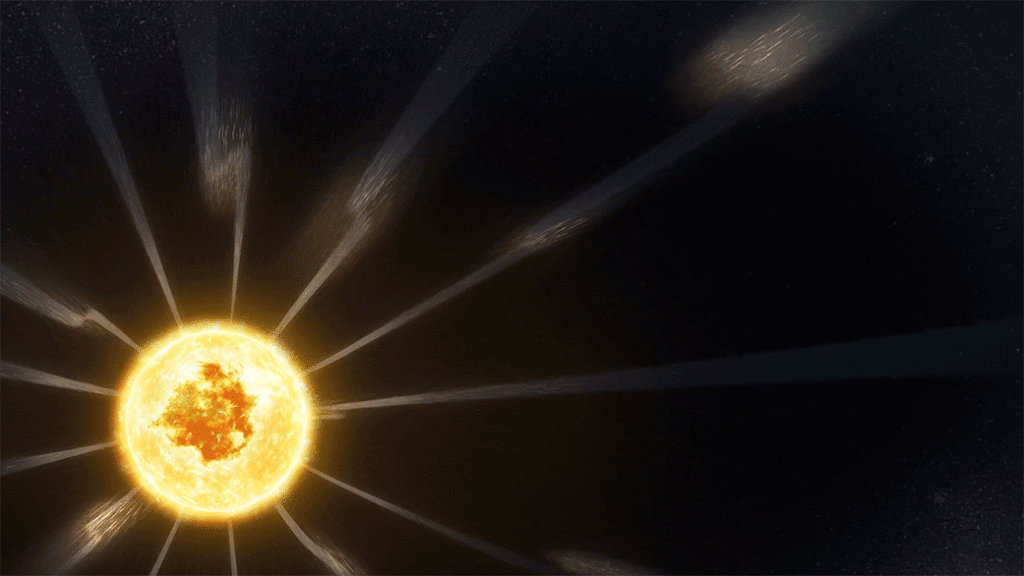Our planet is constantly buffeted by solar wind: electrically charged particles streaming from the Sun at speeds of up to hundreds of kilometers per second. Earth’s magnetic field protects us, but occasionally, a storm overwhelms the planet’s defenses, disrupting electrical transmissions and potentially threatening astronauts.
Though the effects of solar wind are well documented, what causes it has been a mystery for more than 50 years. Now, thanks to a solar close-up, some researchers think the energy behind the flow of particles comes from the Sun’s own magnetic fields snapping together. The process, known as reconnection, may illuminate not only solar wind but winds from other stars as well as the behavior of comets and planetary atmospheres.
Probing the Sun
In part to solve the solar wind mystery—and perhaps learn ways to spot solar storms before they form—researchers developed NASA’s Parker Solar Probe, which launched in 2018 and has been flying in ever-closer orbits to the Sun.
“When [the Parker probe] started getting within around 30 solar radii, we started seeing a very different looking wind.”
“When [the Parker probe] started getting within around 30 solar radii [20 million kilometers], we started seeing a very different looking wind,” said James Drake, a solar physicist at the University of Maryland in College Park, who coled the recent study of solar wind’s origins published in Nature.
In particular, Drake and his collaborators noticed that though solar wind is relatively steady when it reaches Earth, nearer the Sun’s surface it’s very gusty. This observation illuminates details about the corona—the outermost layer of the Sun’s atmosphere.
The corona is composed of extremely hot plasma, in some parts reaching temperatures of 2 million degrees Celsius, compared to the surface temperature of about 5,600°C. The electrons, protons, and ions in this layer are what’s blown out as solar wind. The Sun also exhibits slightly cooler regions called coronal holes, which (other than the permanent ones over the solar north and south poles) form and disappear over the 11-year sunspot cycle. They reach their greatest extent at the solar maximum, which is also when solar wind creates the most weather in the solar system.
Opposites Attract…and Annihilate
With a close-up look at coronal holes provided by the Parker Solar Probe, scientists found the Sun’s magnetic fields there were a lot more complex than the field measurable from near-Earth observatories. Many of the fields tangled and turned back toward the Sun, with much of the tangling occurring where the solar surface was most turbulent.
Reconnection occurs in plasmas when magnetic fields pointing in opposite directions cancel out, rapidly dumping their energy into the surrounding electrons and ions. A simplified picture would be taking two bar magnets pointed in opposite directions and letting them snap together: The noise of their collision is analogous to reconnection energy release. In the solar corona, this process happens when the magnetic fields that turned back toward the Sun come into proximity with those stretching out into the solar system, and the energy released is dumped into the charged particles that make up the solar wind.
Meanwhile, the magnetic fields formed from reconnection are left with kinks known as switchbacks, Drake said. These kinks are the residual traces of the fields before reconnection.

Combined with the unexpected gustiness of the wind near the Sun’s surface, the switchbacks pointed to magnetic reconnection as the origin of solar wind—and an explanation for why the corona is so much hotter than the Sun’s surface.
Other explanations for solar wind genesis don’t lead to this kind of energy burst and can’t explain the switchbacks.
“We have not fully agreed on what mechanism is actually driving the solar wind.”
University College London solar physicist Nawin Ngampoopun said he found the new study enlightening. “We have not fully agreed on what mechanism is actually driving the solar wind,” he said. “For me, it’s a very strong argument based on the data that the solar wind is coming from reconnection.”
Observations and simulations of these bursts also elucidate why the wind is less gusty far from the Sun. Reconnection produces turbulence in the coronal plasma, but like a mountain whitewater stream calms when it reaches the plains, the solar magnetic field becomes less chaotic away from the Sun’s surface, smoothing the outflow of particles.
“Understanding magnetic reconnection and how it energizes plasma is important, as it’s a process that occurs in planetary magnetospheres as well,” said Hayley Williamson, a scientist at the Swedish Institute of Space Physics. This work has implications far from the Sun, she noted, including the interactions of the solar wind with Mercury and comets. “[The researchers] show reconnection directly energizes plasma.”
Ngampoopun highlighted the need for more solar probes in the wake of the new data because spacecraft located at Earth distances can see only one side of the Sun at a given time and close-up views provide details about a very narrow region of the solar surface. However, the new observations set the terms for future studies, potentially helping scientists understand both the basic processes driving solar wind and how storms affecting Earth originate.
—Matthew R. Francis (@DrMRFrancis), Science Writer

